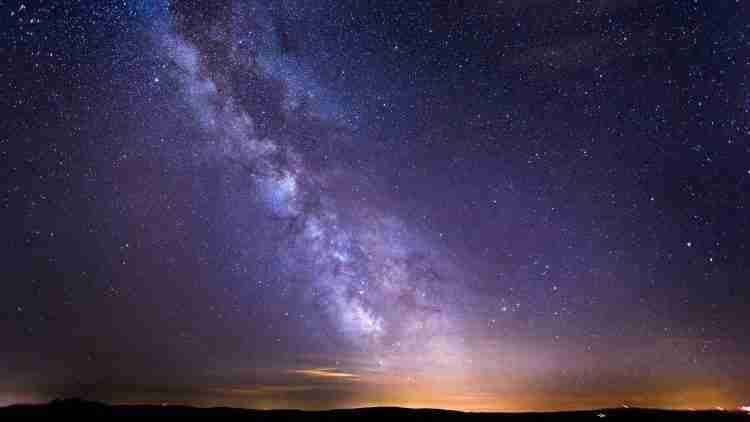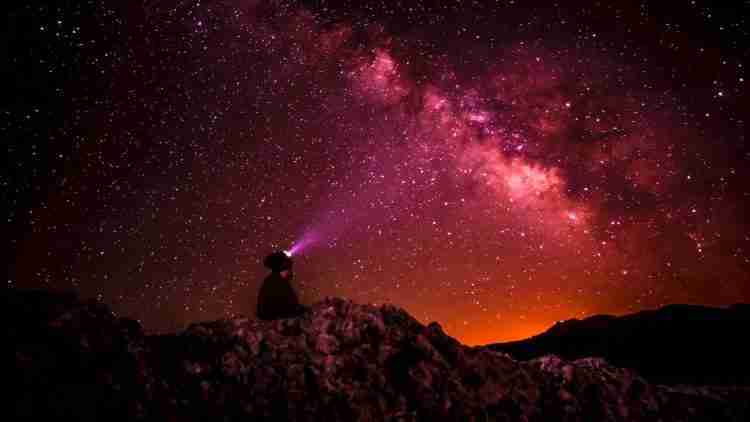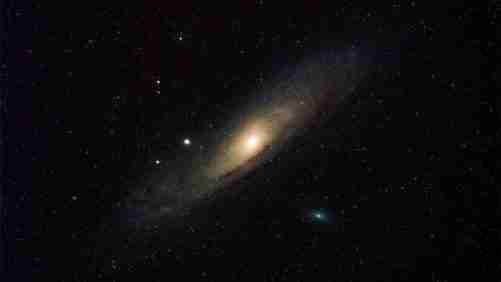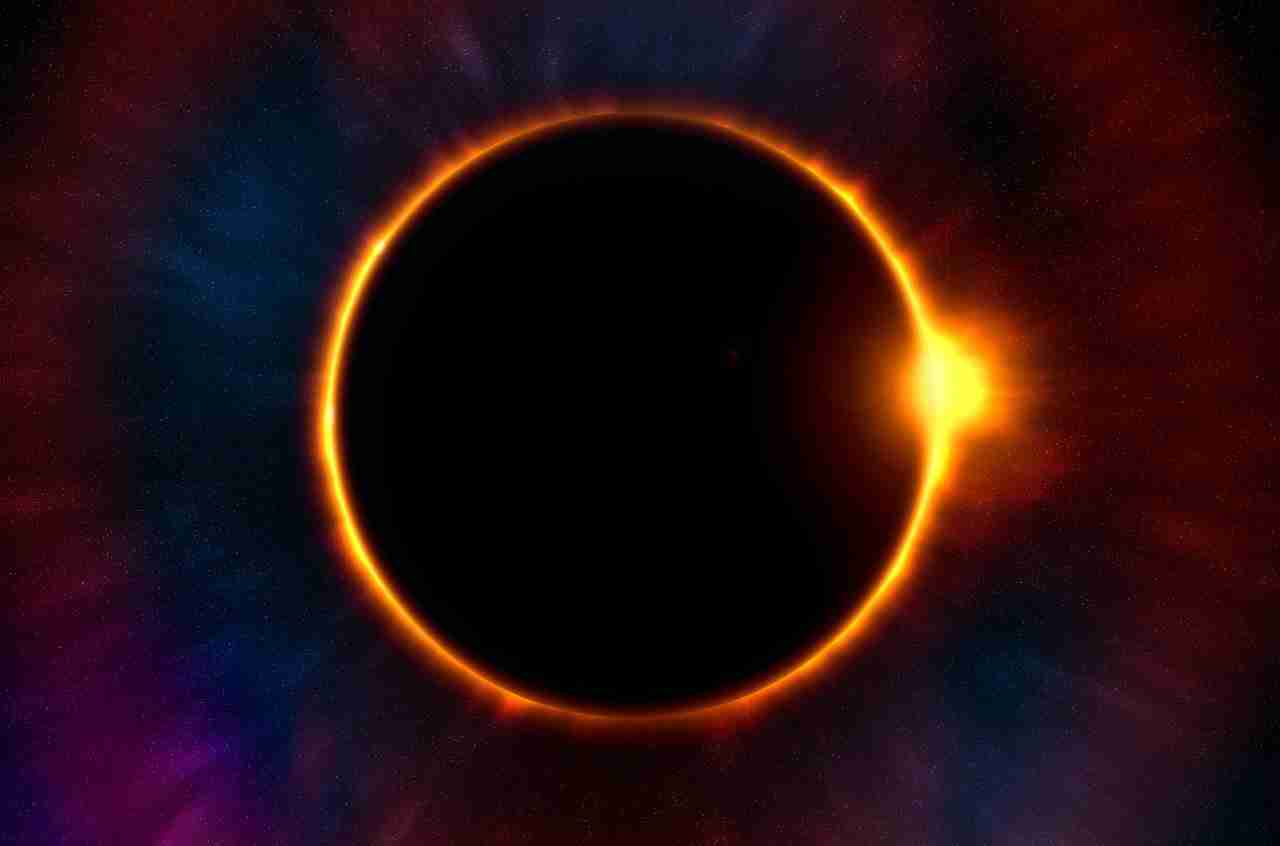24 Fun Facts About Astronomy (Explore the Cosmos)
1. The Sun is not a perfect sphere – it is slightly flattened at the poles and bulges at the equator.
The Sun might appear to be a perfectly formed sphere, but it is in fact not quite this way. Its shape carries a slightly flattened appearance at the poles, while the equator exhibits a full, bulging contour.
Differences between latitudes create an exaggeration in the depth of its flowered structure. This irregular surface is what brings the Sun its characteristic brilliance from afar.
2. The Temperature on the surface of the Sun can reach up to 10,000 degrees Fahrenheit.
The Sun is considered to be one of the warmest places in our solar system, with surface temperatures reaching incredible extremes.
This formidable star boasts temperatures of up to 10,000 degrees Fahrenheit.
To put that into perspective, that’s twice as hot as the hottest environment on Earth! Knowing this, it’s no wonder why we were warned to use sunscreen when going out into direct sunlight for long periods of time.
3. The Earth is not the only planet in our solar system with water – there is evidence of water on Mars and some moons of Jupiter and Saturn.
Earth’s not alone in the solar system when it comes to water; evidence of this vital resource has been suggested in many other worlds. Mars is most widely attributed as a potential host, with more recent findings centering around some of Saturn and Jupiter’s moons.
Hydrologists have been hard at work determining the types of water that might exist beyond planet Earth’s reserves.
4. The Largest known star is called UY Scuti and is about 1,700 times larger than the Sun.
Names make all kinds of stars stand out, and this one is no exception. UY Scuti, which is fun facts about astronomy, is the largest known star in existence, and it’s unbelievably large.
It stands 1,700 times larger than the medium-sized star we know as the Sun. That means UY Scuti is quite literally a “big shot” when compared to its cousins.
This gigantic celestial body really puts our Sun in perspective. Its glaring size draws attention no matter how far away it is seen in the night sky.

the Milky Way Revealed
5. The Milky Way galaxy is not shaped like a flat disk – it is actually a barred spiral galaxy.
The Milky Way is no mere flat disk; its true shape is much more fascinating. In fact, it’s a barred spiral galaxy. This indicates the presence of two prominent spiral arms forming a central bar that reaches outward along the galactic plane.
More detailed observations are showing us even more intricate features, aided by powerful modern telescopes and other imaging technologies.
Understanding these potent structures and differences is essential to further deepen our knowledge of the wider universe.
6. The solar system is constantly moving through space – it is currently moving at a speed of about 450,000 mph.
The solar system never ceases motion — it’s constantly in flux. Right now our planet, along with all its other massive components, is whistling through space at an impressive speed of roughly 450,000 mph!
That’s about 67 miles per second — fast enough to traverse the entire globe over 7 times in just a single hour.
It may seem mind-boggling, but thanks to the wonderful universe in which we reside, these incredible patterns can exist and come together to form our big and beautiful universe!
7. The Largest planet in our solar system is Jupiter, which is about 11 times larger than Earth.
Our solar system has many wonders, among them the massive Jupiter. It is the largest planet known in our universe, measuring 11 times larger than Earth. Its expanse of mass quickly makes it stand out among its celestial neighbors.
This uncontested king of our local galaxies is held in awe by those familiar with its size and grandiose display of radiation mechanisms and other visually alluring elements expelled by its powerful gravitational force.
8. The Moon is slowly moving away from Earth at a rate of about 1.5 inches per year.
The Moon, often regarded as our beloved celestial companion, is slowly drifting away from us; its movements creeping forwardly inching by inch. Fun facts about astronomy reveal that, staggeringly, at a rate of 1.5 inches a year away from the Earth, our beloved celestial companion takes one small step away from us every hour of every day.
Even though this gradual distinctly, so subtle yet still felt to many, it’s the long shadow of protection over humanity that can not and will never be forgotten.
By using astromancy and other technologies we have been able to measure how our satellite stands shielding the Earth for millions of years of life, residing close enough for conversation yet far enough for distance on these soul rides.
9. The surface of Mars has the largest volcano in the solar system, Olympus Mons, which is about three times taller than Mount Everest.
The planet of Mars is no exception when it comes to a stunning landscape.
The massive Olympus Mons towers above other planetary formations in the entire Solar System, withstanding silvery depths of space and eternal starry nights like a champion.
This colossal volcano reaches 42km above the Martian surface — four times as high as Mount Everest! Its distinction goes beyond dizzying heights which dwarf every other volcanic structure seen in the Solar System.

Mars’ Towering Volcanic Wonder
10. The smallest known star is called EBLM J0555-57Ab and is about the size of Jupiter.
Introducing EBLM J0555-57Ab! This stellar presence is the absolute tiniest known star in existence, with a powerful personality packed into its miniature package.
It’s comparable in size to the largest planet out there—Jupiter—which shouldn’t come as a surprise; after all, the dwarf’s name is simply an acronym for ‘Extremely Low Mass Binary Star’ that orbits around it!
Scientists are baffled by how EBLM J0555-57Ab manages to maintain balance, leading them to study this star in further detail.
11. The Earth is the densest planet in the solar system, with a density of about 5.5 grams per cubic centimeter.
The Earth is the densest planet in the Solar System. Its density far exceeds that of other planets, with a whopping 5.5 grams of mass existing in every singular cubic centimeter!
That’s much higher than Jupiter’s 2.6 grams and Venus’ 5.2 grams per cubic centimeter, firmly stamping Earth as the closest competitor to our very own Sun!
The amount of mass piling up into such a tiny space on Earth gives it an incredible level of gravitation, easily justifying our place as the center of the Solar System for millennia.
12. The Earth’s atmosphere protects us from harmful solar radiation and meteor impacts.
The Earth’s atmosphere, which is filled with fascinating fun facts about astronomy, is vital for our survival. It shields us from harsh solar rays, safeguarding us from skin cancer, aging, and other issues caused by overexposure to the sun.
It also acts as a shield against dangerous meteors that strike the ground. Without this protective layer, these space rocks would cause more destruction and put people at an even greater risk than they already face on a daily basis.
We owe a huge thank you to the atmosphere for being our guard against such peril!
13. The surface of Venus is hot enough to melt lead, with temperatures reaching up to 864 degrees Fahrenheit.
Among all the other planets in the Solar System, Venus stands out due to its extreme surface temperature. The temperature on the surface of Venus can reach a staggering 864 degrees Fahrenheit — hot enough to melt lead!
Its thick and acidic atmosphere means that extreme temperatures persist for extended periods of time.
The amount of solar energy absorbed by the Earth is much less than that absorbed by Venus due to its dense atmosphere, which makes it difficult for energy from pollutants and dust particles to dissipate.
14. There are more than 200 billion stars in the Milky Way galaxy alone.
The Milky Way galaxy is filled with an incredible number of stars. Estimates suggest the total amount of stars total up to more than 200 billion! That’s right, billions.
Such a vast number is hard to wrap our minds around and impossible to count without help from technology.
This awe-inspiring expanse is only one galaxy—in the whole universe! One thing is certain, tirelessly shining in all its splendor—the brilliant starlight of the Milky Way astounds us all.
15. The planets in our solar system are not evenly spaced – they follow an elliptical orbit around the Sun.
Our solar system consists of planets that don’t orbit symmetrically; they are arranged in an elliptical pattern. Our star, the Sun, is dynamic and central to the arrangement of the planets.
The elliptical orbit of these planets around the sun connects them and encourages movement.
As time goes on, the alignment and paths around which these bodies travel obey laws that show a clear progression from d nearby to distant celestial objects. All nine major planets: Mercury, Venus, Earth, Mars, Jupiter, Saturn, Uranus, Neptune, and Planet X have their own laws of gravity which affect their journey around the sun.
16. The surface of the Moon is covered in a layer of dust called regolith, which is made up of fine rock particles.
The surface of the Moon is no ordinary surface: it is covered in a layer of dust called regolith. This dust has an interesting composition, made up of fine rock particles.
The regolith forms a surface that is unsuitable for humans to walk on, as it moves and shifts easily.
Despite the treacherous terrain, the regolith on the Moon offers incredible insights into its geologic history, with scientists exploring this dust for clues about how our celestial neighbor formed.

of Moon’s Regolith Revealed
17. The First spacecraft to land on Mars was the Viking 1 in 1976.
In 1976, history was made when the first ever successful mission to Mars uniquely occurred. This pioneering voyage came by way of Viking 1, a needlessly brave and incredibly ambitious spacecraft that reached its highly sought-after destination.
It exhibited signs of expectancy as the outer layers of the atmosphere blended in with endless possibilities; marking an eventful undertaking that highlighted technological breakthroughs as opportunities emerged.
Moreover, what transpired sent illusions as far out into the universe as one can dare to dream inspiring future generations to crest conditions and sail towards bewildering destinations no one at the time predicted feasible.
18. The surface of Mercury is covered in craters, which were caused by meteor impacts.
The surface of Mercury, known for its fascinating characteristics, is laden with craters and marks on its rocky, dark face. Fun facts about astronomy reveal that these features were created by something outside and beyond our power, something that once hurtled toward it as an unstoppable force.
Meteor impacts were their cause; tiny pieces of dust were beaten to rock by the speed with which they traversed the universe through space. A continuous bombardment that lasted eons and forever left harrowing evidence strewn across the planet’s battered yard.
Craters are just one part of it; a testament to colossal forces orchestrated by science greater than our own; ones directed from far beyond anything we can return.
19. The surface of Saturn’s moon Titan is covered in a thick layer of methane and ethane clouds.
The moon Titan, one of Saturn’s many satellites, has an atmosphere, unlike any other extraterrestrial body. Its environment is marked by a dense, pearl-grey expanse inundated with methane and ethane clouds.
They form a cloudscape, draping downward to obscure the planet’s rocky terrain, lending the moon its never before seen features. An interweaving pattern of hydrocarbons envelops the satellite while a translucent haze smothers its ground, cloaking it in mystery.
Reaching through it are channels made up of liquid methane and other hydrocarbons like ethane which flow between gaps in this murky layer as a way for Titan to weather it’s changing climate conditions.
20. The First spacecraft to fly by Jupiter was Pioneer 10 in 1973.
The history of space exploration took an exciting turn in 1973. That’s when Pioneer 10, a highly advanced craft constructed by some of the greatest minds in the field of aerospace technology, launched into space and flew by Jupiter.
This mission solidified mankind’s aspirations of one day visiting the planet that for centuries had held such fascination for science before it was even visible through telescopes gracing night skies on Earth.
The success of Pioneer 10 demonstrated that remarkable advancements could be made in spacecraft technology, providing engineers with a new world of possibilities for exploring even more distant planets now known to exist within our expansive universe.
21. The Earth’s magnetic field protects us from harmful cosmic radiation.
The Earth is blessed with an integral protective layer. Fun facts about astronomy, the magnetic field that surrounds the planet always plays a pivotal role in ensuring our safety.
When this natural armor acts that cosmic radiation which can be exceptionally damaging and harmful to living beings and other structures is reduced significantly.
We owe gratitude to this field for it shielding us from these invisible adversaries that most of the time go unnoticed.

us from Cosmic Radiation
22. The surface of the Moon is not smooth – it is actually very rocky and uneven.
A closer look at the Moon’s surface may not appear as heavenly as many imagine. Its surface is not smooth and even, but rather made up of volcanic rocks.
The rocky terrain on the Moon ranges from soft dust to rugged mountains. Yes, the Moon’s appearance is more ‘rocky’ than newly fallen snow.
The mountainous spots stretch for miles, giving it incredible textures and craters created by aerolite that was hit centuries ago and kept its shape.
23. The First spacecraft to land on Venus was the Venera 7 in 1970.
The exploration of Venus took a remarkable leap in 1970 with the launch of the Venera 7. It was the earliest spacecraft to achieve a landing on our neighboring planet.
A groundbreaking achievement, it signaled a new stage in extraterrestrial exploration and revealed valuable data about what lies beneath Venus’ atmosphere.
This revolutionary mission revolutionized mankind’s understanding of planetary exploration and ignited further interest in space missions to our celestial neighbors.
24. The surface of Mars is covered in dust storms, which can last for weeks or even months.
Mars is covered by dust storms, cloaking its desolate surface. These torrential tempests can last for weeks and in certain cases, even months. It is an unforgiving homage to the Red Planet’s savage climate and intense winds.
The reddish hue of the dust gives it a distinctive color, so fascinating yet hostile in nature. One imagining the unaltered paintings of music made with these mighty peepers could be nothing short of delighted.
Over time, more clues on how our universe came to be are being found through advancements in research orbiting Mars, including fun facts about astronomy. In doing so, a much better vibrant portrait of the planet’s enigmatic story barely scratches our imagination’s realm.







